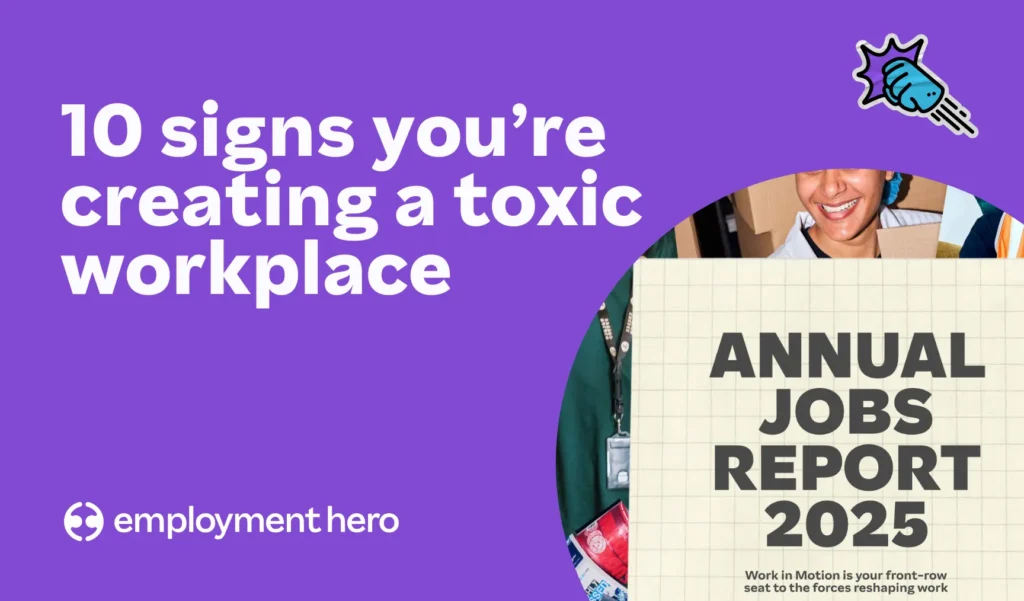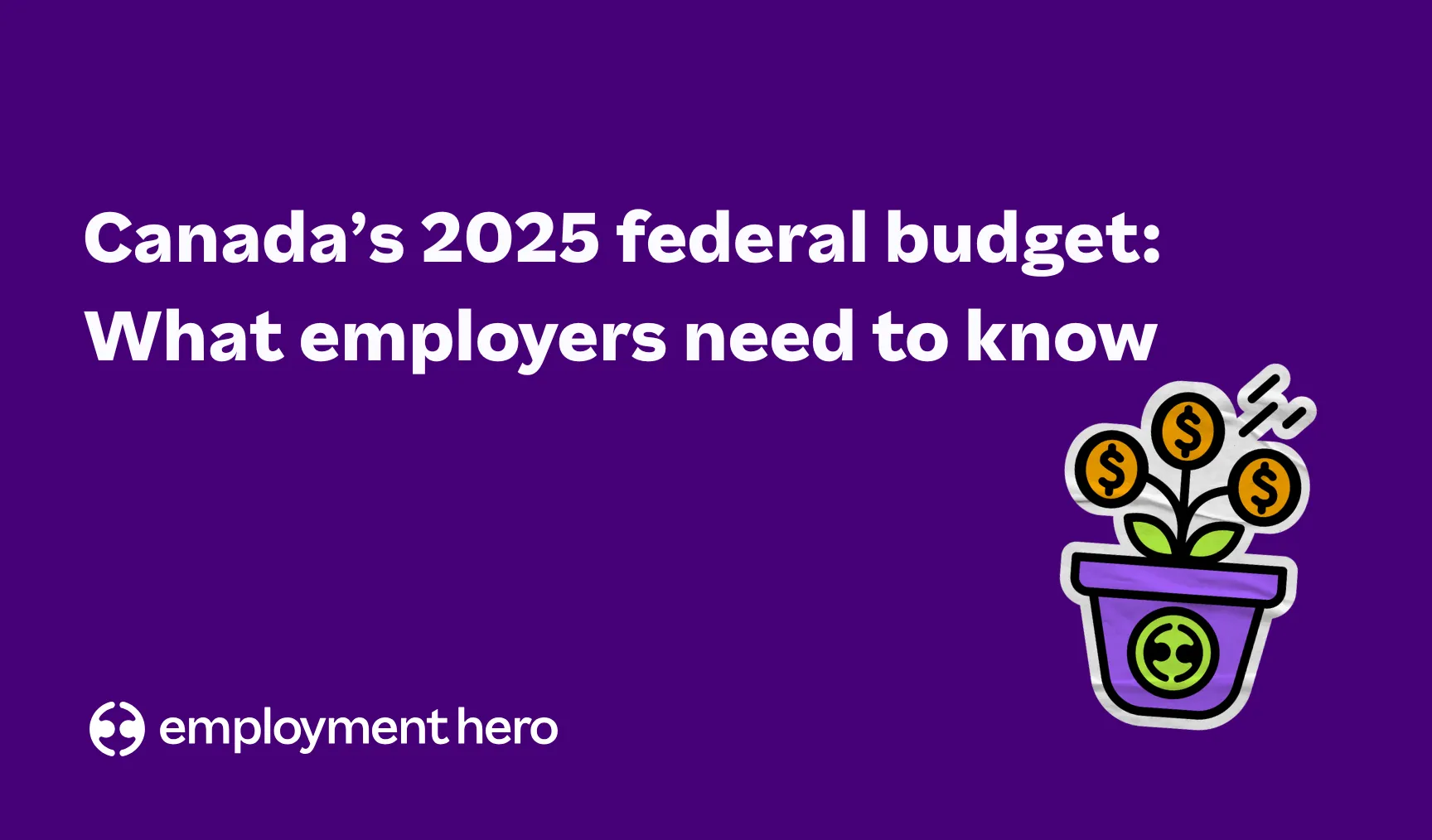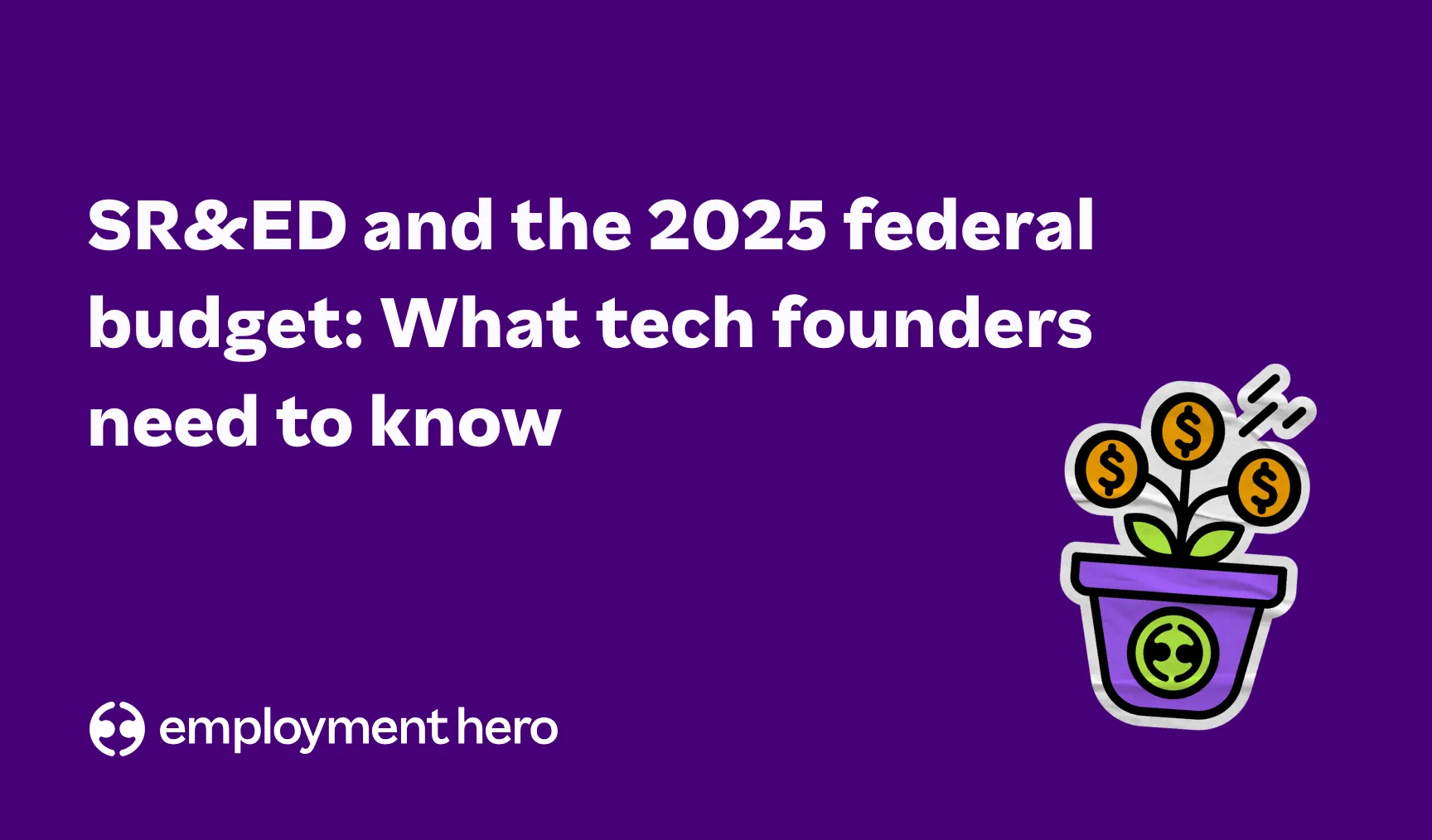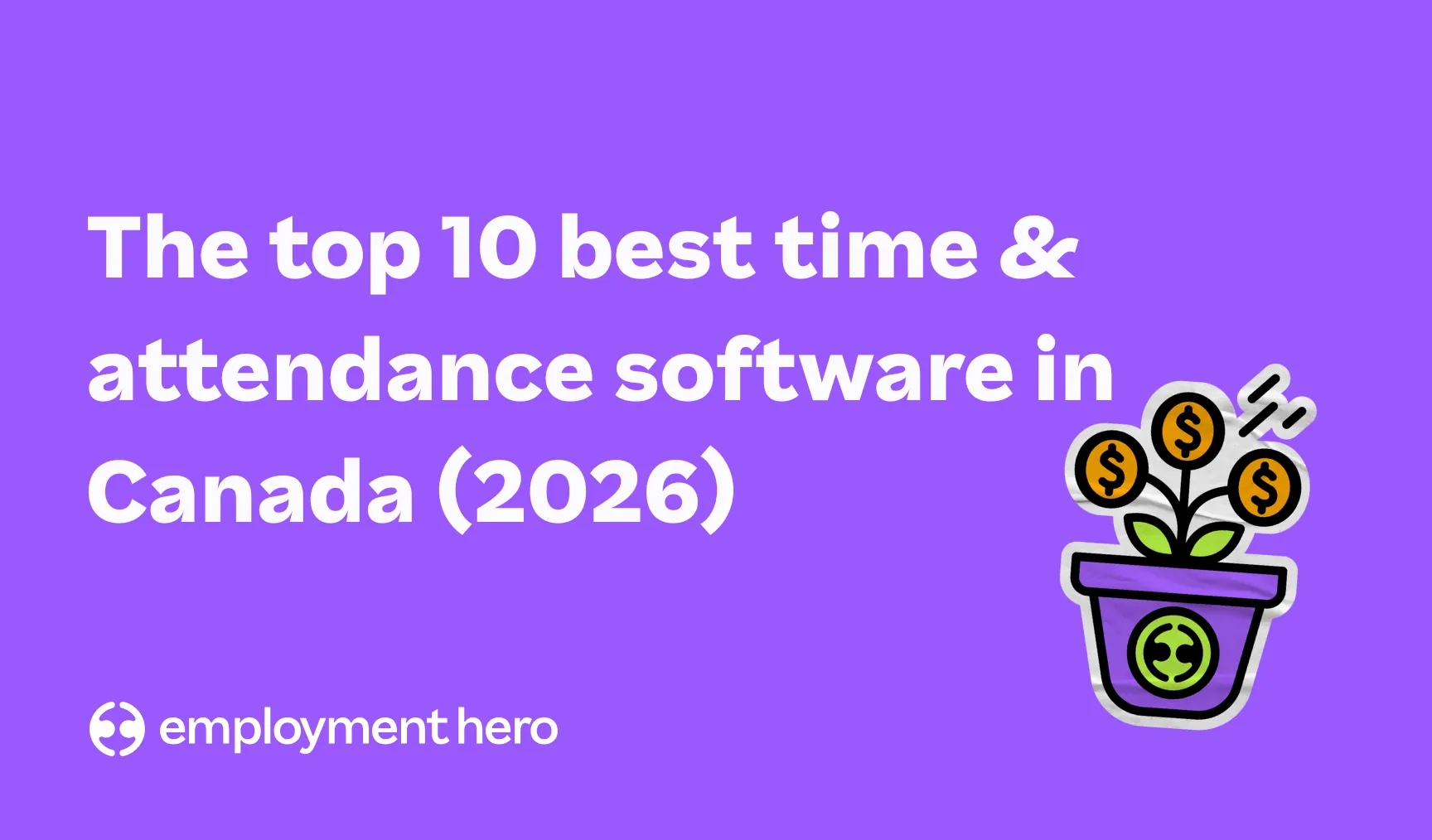10 signs you’re creating a toxic workplace

Contents
Work should stretch you, not squeeze the life out of you. Yet across Canada, the risk of a toxic workplace culture is on the rise. According to Employment Hero’s 2025 Annual Jobs Report, more than a third of full-time Canadian workers now juggle multiple jobs just to get by, and over half would prefer a role with less pressure and responsibility. This high-pressure work environment isn’t just tough on employees — it’s corrosive for business.
If you’re wondering whether your workplace has crossed the line, here are ten red flags to watch for. Each one signals that pressure has tipped from motivating to destructive. Pay attention, because the cost of ignoring them is talent, growth and reputation.
1. Toxic Workplace Culture Thrives on Always-On Expectations
In a toxic workplace culture, the laptop never really closes. Employees answer emails at midnight and feel guilty for ignoring weekend pings. The Jobs Report shows that 62% of Gen Z Canadians are working longer hours to prove themselves. If you want your team to thrive, you must actively dismantle always-on expectations. Here’s a practical checklist SMB leaders can put in place to break the cycle:
- Publish quiet hours so employees know when it’s safe to switch off without judgment
- Train managers to schedule or delay-send messages rather than firing them off at midnight
- Recognize and reward efficiency during the day instead of glorifying late-night heroics
- Audit after-hours activity regularly to spot patterns of overwork before burnout sets in
- Model healthy boundaries from the top — leaders should log off on time and show it’s safe to do so
- Encourage full use of leave and downtime by celebrating recovery as part of sustainable success
These small but visible actions send a big cultural signal: loyalty and performance come from balance, not burnout.
2. High-Pressure Work is Mistaken for High Performance
There’s a difference between working hard and being seen working hard. In a toxic workplace, hours trump outcomes; the person logging 60 hours gets praised while the person who solved the problem in 20 goes unnoticed. This obsession with presenteeism punishes caregivers, parents and those with firm boundaries.
Canadian workers know the feeling, with only 27% prioritizing remote/hybrid setups to ensure visibility. Businesses that fail to separate face time from value will bleed talent. Redefining performance means focusing on outcomes. Here’s how SMBs can take tangible steps to shift the culture from optics to impact:
- Build transparent role scorecards: Sit down with each team lead and identify 3–4 measurable outcomes for every role — revenue generated, client satisfaction scores, or project milestones. Document them in a shared dashboard that employees and managers can both access.
- Make outcomes visible across the business: Share weekly progress snapshots in team channels or at all-hands meetings. Spotlight results and achievements, not overtime hours.
- Train managers to measure delivery and value: Run workshops where leaders review case studies of high-impact contributions versus long-hour presenteeism. Teach them to give feedback rooted in results.
- Celebrate problem-solving and innovation: Add recognition programs that reward employees who streamline processes, solve bottlenecks, or propose fresh ideas. Highlight these wins in newsletters or team Shout Outs with Employment Hero Work.
- Tell success stories company-wide to reinforce the message that results matter more than presenteeism
These actions empower leaders to turn empty busyness into meaningful contribution — the foundation of a true high-performance culture. The good news – all of it can be managed and tracked centrally using Employment Hero’s performance and recognition tools.
3. Workplace Stress Escalates When Everything is Urgent
Urgency has its place. But in high-pressure workplaces, every project is “critical.” Employees spend their days sprinting between fake emergencies. One in three workers already holds multiple jobs and when everything at work is urgent, there’s no bandwidth left. The fix starts with leaders and it needs to be practical. Here’s how SMBs can create clarity instead of chaos:
- Define a priority framework: Create clear categories like P0 (critical today), P1 (important this week) and P2 (planned for next sprint). Share these across all teams so urgency is standardized, not improvised.
- Model calm execution: Leaders should resist panic emails and late-night fire drills. Instead, communicate priorities in weekly planning sessions and stick to them unless a true emergency arises.
- Teach teams to challenge urgency: Empower employees to ask, “Why is this urgent?” or “What can be deprioritized if we move this up?” Normalizing these questions helps prevent false alarms.
- Leverage tools for visibility: With Employment Hero’s all-in-one platform, HR insights and time tracking give leaders visibility into capacity, while the Employment Hero Work app centralizes tasks and time off requests so employees can focus on what’s truly urgent — not just what feels urgent.
- Review and reset regularly: At the end of each week, revisit what was labelled urgent. If too many tasks landed in P0, it’s a signal your system needs adjustment.
This isn’t weakness — it’s sustainability. When urgency is managed, employees can plan, focus and deliver without spiralling into burnout.
4. Meetings Create Unhealthy Work Boundaries
Let’s be blunt: if your employees are sitting in meetings all day, they’re not doing their jobs. Toxic workplaces let meetings metastasize until calendars are packed wall-to-wall. Endless meetings are a dealbreaker for Canadians already seeking less pressure. SMBs must cut ruthlessly, but the shift needs structure. Here’s how to reclaim time and protect focus:
- Cancel standing meetings that don’t drive clear outcomes. Replace them with short async updates shared through internal comms tools. It’s a new world we’re working in – not everything needs to be shared in real-time.
- Cap discussions at 25 or 50 minutes and assign a decision owner before the meeting starts. No decision, no meeting.
- Make decisions in the room and move on — avoid endless follow-ups that drag projects out.
- Audit calendars monthly to spot recurring time-wasters and eliminate them.
- Use the Employment Hero Work app to share announcements, recognize wins and update teams without dragging everyone into another call.
5. Toxic Management Fuels Workplace Red Flags
Nothing corrodes culture faster than fear. Toxic management shows up in raised voices, public shaming and punishments that don’t fit mistakes. Employees stop bringing up problems because they don’t want to be blamed.
The Jobs Report adds another layer: 27% of Canadians fear AI is already reducing job opportunities. Combine that anxiety with toxic leadership, and you’ve created a workforce too scared to speak up and too distracted to perform.
The antidote is clarity and coaching. Here’s how SMBs can build managers who empower instead of intimidate:
- Train managers in constructive feedback: Run workshops that focus on giving private, specific guidance instead of public criticism.
- Celebrate leaders who create psychological safety: Recognize and reward managers who encourage open discussion and support risk-taking.
- Replace intimidation with clear direction: Encourage leaders to outline expectations and pathways to success, not just highlight failures.
- Use Employment Hero’s HR Insights to gather anonymous employee feedback about management styles, spotting issues early and coaching leaders where needed.
- Tap into Employment Hero’s world to understand your workforce: Custom reports give visibility on team makeup across gender, age, tenure and location, helping leaders spot trends and address issues proactively.
- Streamline HR to-dos with task tracking: A central dashboard keeps managers on top of responsibilities so nothing slips through the cracks.
- Leverage HR reporting tools to focus on strategy: Cut down admin and free up leaders to spend more time coaching, supporting and driving big-picture goals.
When managers step up as coaches instead of critics, teams feel safe to innovate, share ideas and take the smart risks that drive growth.
6. Quiet Cracking Signals Workplace Burnout
Forget quiet quitting. Quiet cracking is the bigger threat. Employees still show up, still deliver, but inside, they’re breaking. In Canada, quiet cracking is everywhere. With 35% of full-time workers juggling multiple jobs, exhaustion is already baked into the system. To move away from short-lived “heroics” and build a truly resilient team, focus your strategy on these pillars:
- Encourage radical honesty: Establish a culture where it’s safe—and expected—for employees to be honest about their capacity, workload and challenges without fear of penalty.
- Conduct proactive workload audits: Don’t wait for a crisis. Regularly review and audit team workloads to ensure equitable distribution and prevent burnout before it starts.
- Resource goals appropriately: Always pair “stretch goals” with “stretch resources.” If you expect more, you must explicitly allocate more time, budget, or team support.
- Build a “voice-up” mechanism: Implement regular, low-stakes check-ins or confidential channels that encourage employees to speak up about being overloaded before they reach a breaking point.
- Reward sustainability over heroics: Fundamentally shift your recognition framework to celebrate consistent, healthy achievement, not the short-term, unsustainable efforts of an emergency “saviour.”
Shifting your culture from a pattern of last-minute heroics to sustainable success requires more than good intentions—it demands a deliberate, honest and auditable process. This kind of accountability is built into the Employment Operating System (EOS), giving leaders the workload and capacity visibility they need to prevent burnout before it starts.
7. Work-Life Imbalance Kills Curiosity
Toxic workplaces make downtime dangerous. Employees who finish early feel guilty. Learning, experimenting and improving processes get pushed to nights and weekends, killing the spark of innovation. The Jobs Report shows one in three Canadians want to reinvent their careers entirely. If you smother curiosity, you’re practically pushing them out the door. To shift your culture from tactical chaos to strategic excellence, implement this checklist:
- Mandate strategic slack time: Formally allocate 10% of every employee’s week for improvement work, deep thinking, or skill development. Treat this time as a non-negotiable strategy, not an indulgence.
- Reward efficiency, not endurance: Overhaul your recognition framework to celebrate individuals who streamline processes and deliver impact faster, rather than those who simply grind the longest hours.
- Formalize curiosity as a KPI: Integrate metrics for learning, experimentation, or new skill application into performance reviews to make continuous growth a quantifiable goal.
- Link growth to loyalty: Clearly communicate how a culture that values this strategic growth directly fuels both employee loyalty and sustained, high performance.
Building this type of culture creates a flywheel of innovation and stability.
8. Policies Without Practice Drive Employee Disengagement
On paper, your company might look progressive. But in practice, few may use mental health days or generous leave without guilt. This gap between policy and reality breeds cynicism. People disengage when they see benefits as hollow promises.
According to the Jobs Report, 53% of Canadian workers want jobs with less pressure. Empty policies won’t satisfy them. To close the gap between your policies and daily practice, shift your focus to accountability across the organization:
- Operationalize one key policy: Select a single high-value policy (e.g., right-to-disconnect or leave utilization) and commit to making it a daily reality, not just a document.
- Actively enforce disconnect rules: Move beyond simply having a “right-to-disconnect” rule and actively enforce it from the top down. Make out-of-hours communication the rare exception, not the norm.
- Mandate time off utilization: Proactively encourage—or even require—employees to take their full allotted leave time to prevent burnout and underscore well-being.
- Reward balanced leadership: Publicly recognize and celebrate leaders who consistently model work-life balance and demonstrate respect for employee time and boundaries.
Closing the gap between what you preach and what you practice demands accountability from every level. Employment Hero’s HR Software provides the automation and policy enforcement tools needed to make your stated benefits a guaranteed reality for every employee.
9. Toxic Culture Hides Behind Meaningless Metrics
Dashboards overloaded with KPIs don’t drive performance — they drive confusion. Employees chase numbers that don’t matter, while the real goals get lost. Vanity metrics waste time, energy and morale. To cut through the noise and unlock motivation, your path is simple: unwavering clarity on what truly matters:
- Simplify metrics to three: Cut the noise by limiting each team’s focus to three, and only three, truly meaningful metrics.
- Link metrics to impact: Ensure every one of those core metrics ties directly to revenue, customer value, or efficiency. If it doesn’t, it doesn’t matter.
- Enforce weekly review and retirement: Set a non-negotiable weekly review cadence and commit to retiring any metric that fails the three-pillar impact test.
Unwavering clarity about what matters most is what cuts through organizational complexity and boosts motivation.
10. Employee Burnout Grows When Feedback is Absent
Feedback should be the fuel of growth. In toxic cultures, it’s rare, vague or delayed until annual reviews. The Jobs Report highlights the stakes: one in three Canadians wants a complete career change. Without timely feedback, they’ll find their growth somewhere else. The fix for motivation is simple: a consistent connection. Implement this checklist to ensure every employee feels seen and supported:
- Mandate quarterly growth conversations: Move beyond annual reviews by scheduling dedicated, future-focused career and growth discussions every quarter.
- Establish monthly pulse checks: Implement short, frequent one-on-ones to address roadblocks and gather feedback immediately, not once a year.
- Embed peer recognition: Integrate a system that allows and encourages employees to give timely, visible recognition to colleagues as part of their daily workflow.
- Elevate feedback standards: Make it a cultural rule that all feedback is timely, specific and constructive, moving away from vague, low-impact annual critiques.
The formula for high-performance and loyalty is simple: make sure your people feel seen and supported. Employees who feel this support are inherently more motivated, more loyal and more resilient.
Turning Pressure into Performance
High performance doesn’t require high-pressure work. In fact, the two are often opposites. Canadian SMBs that reduce unnecessary stress — by cutting meetings, clarifying priorities and giving feedback — see stronger results. Employees stay longer. Productivity rises. Innovation flourishes.
Toxic workplace culture isn’t inevitable. It’s a choice. You can either ignore the warning signs and watch your best people burn out, or you can design a culture that balances ambition with sustainability. Build for clarity, fairness and recovery. Do that, and you won’t just avoid burnout — you’ll unlock lasting performance.
Ready to replace toxic workplace culture with a healthier, higher-performing environment? Employment Hero helps SMBs create sustainable systems where employees thrive.
FAQs about toxic workplaces
Always-on expectations, poor management, meaningless metrics, fake urgency and lack of feedback are strong indicators of toxic workplace culture.
If you’re always exhausted, working late to catch up and dreading work before the week even starts, your workplace may be too high-pressure.
Stress is temporary and can motivate in short bursts. Burnout is chronic, leading to exhaustion, cynicism and lower performance.
Quiet cracking is when employees keep showing up but slowly fracture under growing pressure. Mistakes, irritability and absences increase while engagement declines.
Balance goals with capacity. Cut unnecessary meetings, resource stretch projects properly and train managers to spot early stress signals.
Right-to-disconnect guidelines, enforced vacation, meeting-free blocks and clear after-hours boundaries help restore balance.
Related Resources
-
 Read more: 2025 federal budget: What Canadian employers need to know
Read more: 2025 federal budget: What Canadian employers need to know2025 federal budget: What Canadian employers need to know
Discover what Canada’s 2025 federal budget means for employers, from enhanced SR&ED incentives to new talent and funding opportunities.
-
 Read more: What tech founders should know about the 2025 federal budget and why this year is the perfect time to double down on SR&ED
Read more: What tech founders should know about the 2025 federal budget and why this year is the perfect time to double down on SR&EDWhat tech founders should know about the 2025 federal budget and why this year is the perfect time to double down on SR&ED
Discover how the 2025 federal budget enhances SR&ED for Canadian startups. Learn how founders can maximize refunds, extend runway and…
-
 Read more: Best time and attendance software in Canada (2026)
Read more: Best time and attendance software in Canada (2026)Best time and attendance software in Canada (2026)
Looking for the best time and attendance software in Canada? We compare top HR platforms to help you find the…


















